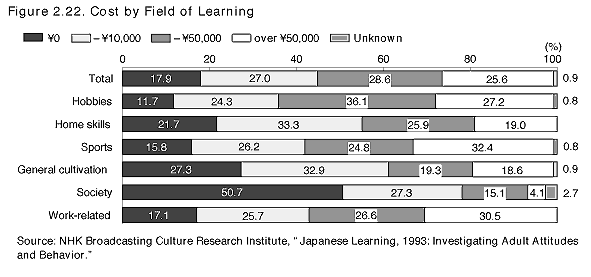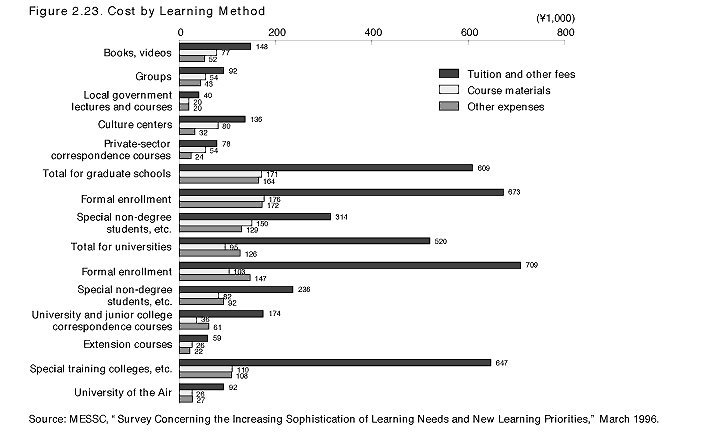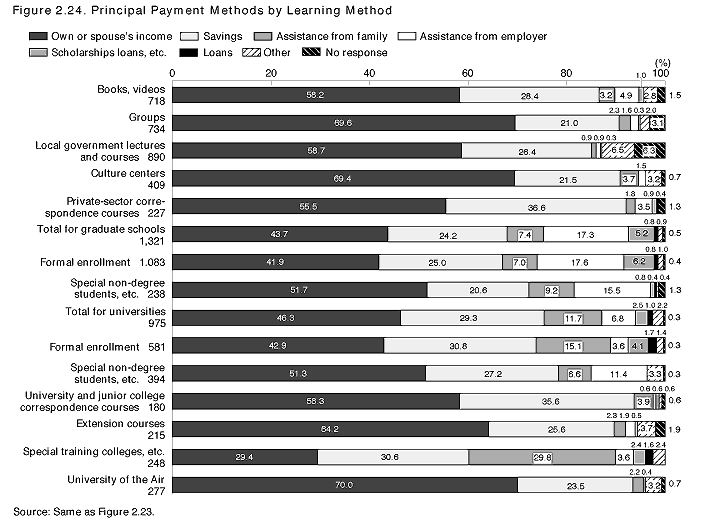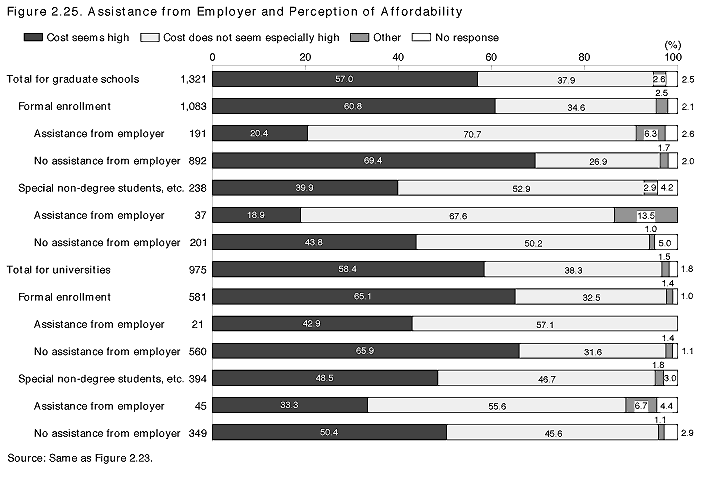| Home > Policy > White Paper, Notice, Announcement > White Paper > JAPANESE GOVERNMENT POLICIES IN EDUCATION, SCIENCE, SPORTS AND CULTURE 1996 > Priorities and Prospects for a Lifelong Learning Society Chapter 2 Section 1 8 | ||
Adult learners tend to spend money on learning activities relating to hobbies, sports, and work, but not on learning activities relating to the family or society. For example, the results of the NHK survey cited earlier show that the percentages of people who spent over \50,000 (the highest amount stipulated in the survey) a year per field of learning were 27.2% for hobbies, 32.4% for sports, and 30.5% for work-related fields of learning ( Figure 2.22 ). Survey participants were also asked about their interest in future learning activities. While most people wanted lower learning costs, they were also prepared to spend relatively large amounts. For example, 19.8% of respondents expected to spend \50,000 or more for work-related fields of learning. But 50.7% of people who were learning in society-related fields indicated that they were not spending any money, an extremely high percentage compared with other fields. In addition, 30.8% of respondents indicated that they wished to continue their learning activities with no expenditure. The aging of society, the environment, and social welfare were among the areas included in the survey's society-related category. If learning in these areas requires participation in classes or courses rather than methods that involve little or no expenditure (such as learning through newspapers or television), these attitudes may hinder efforts to create the conditions for learning.
According to the results of the 1996 MESSC survey, learning methods that require little annual expenditure include participation in groups, local government courses, and extension courses provided by universities and other institutions of higher education. The average annual expenditure of full-time university and graduate students and students at special training colleges and other institutions, including tuition and other fees and the cost of textbooks and other supplies, was well over \500,000 ( Figure 2.23 ).
Basically, learners pay these costs from their own or their spouse's income or from savings. The percentage of learners receiving assistance from employers, scholarship loans, and so on is small ( Figure 2.24 ). Over half the people studying at universities and graduate schools perceive the cost to be high, although the percentage is lower among those receiving assistance from employers ( Figure 2.25 ). Over 40% of those studying at special training colleges feel the same.




| Back to Top | MEXT HOME |